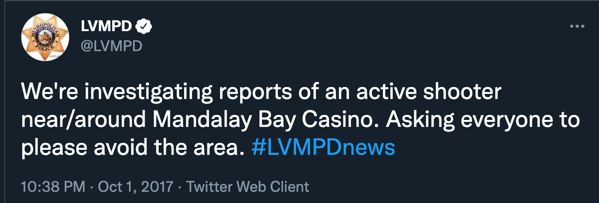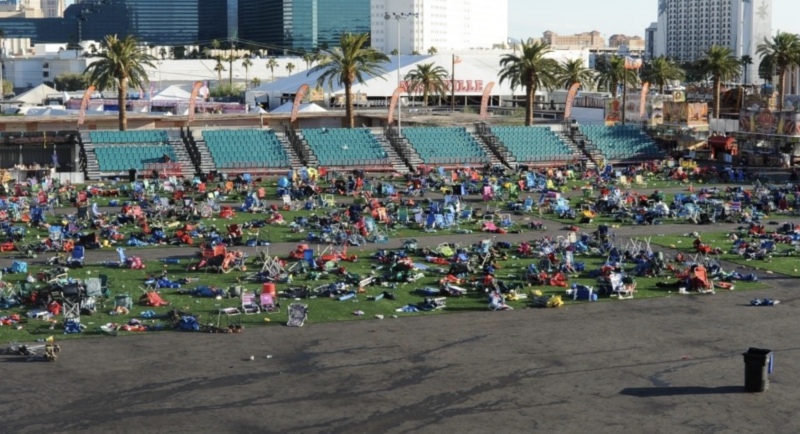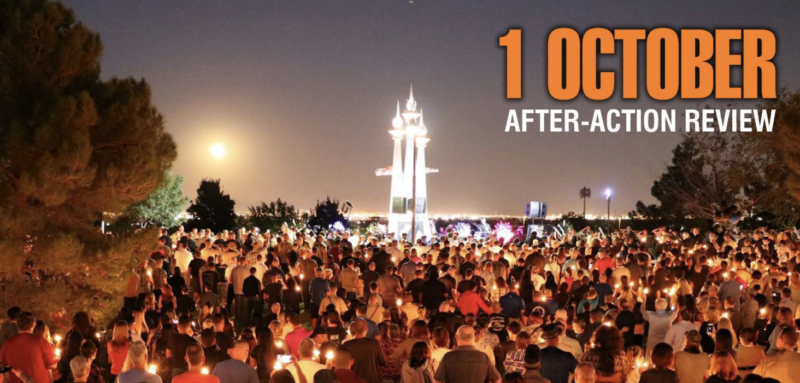When a gunman opened fire from the 32nd floor of the Mandalay Bay Hotel in Las Vegas, emergency department doctors at Sunrise Hospital faced a challenge of a lifetime.
“I was out in the ambulance bay when the first police cars arrived with patients,” explained Dr. Kevin Menes, one of the few ED doctors on shift that night. “There were three to four people inside each cruiser. Two people on the floorboards and two in the back seat, and they were in bad shape.”
Over the next few hours, the emergency team took in more than 200 people with gunshot wounds. Dr. Menes and team’s heroic efforts became a textbook example of triage, saving lives by rapidly evaluating and prioritizing care. The lessons learned from that terrible night have lots of parallels to the challenges of triaging real-time information.
Over the last few years, the volume of real-time data and sophistication of mis- and disinformation have grown exponentially. During a significant incident, global security and intelligence teams – who are tasked with keeping employees safe – are faced with a surge of confusing and often conflicting information. Every minute matters, and the right decisions can save lives.
When there’s too much unstructured information, cognitive load becomes a problem. Research shows your performance becomes impaired and decision-making deteriorates. Oddly enough, adding more real-time information can have the inverse effect of slowing your ability to make good decisions.
Information triage is the process of surfacing, verifying and prioritizing critical details as quickly as possible. Everything starts with information, and the triage process makes it manageable and actionable for decision-makers. At Factal, we specialize in triaging breaking news events, and we’ve found many parallels with the medical field.
1. Plan and practice
For Dr. Menes, effective triage starts with planning and practicing a mass casualty incident.
“For years I had been planning how I would handle a MCI, but I rarely shared it because people might think I was crazy,” he explained in a debrief of the event in Emergency Physicians Monthly. “It’s an open secret that Las Vegas is a big target because of its large crowds.”
While the hospital had a plan, Menes had mentally rehearsed his own. Before the first police cars arrived, Dr. Menes had already kicked his plan into motion, clearing operating rooms, scrambling gurneys and calling in the entire staff to help.

Planning lays the groundwork for information triage, too. What type of information should be routed to which people under what circumstances? In what format? Establish these workflows in advance, and rehearse different scenarios.
2. Scale staffing immediately
Hospitals are particularly adept at scrambling staff to work quickly, flexing with demand as a normal course of business. It’s a lesson other industries can learn, especially in today’s era of remote work. Instead of racing people to the office, teams can respond online in minutes – even if it’s just to check in. By positioning teams in a geographically distributed fashion, you’ll cover more time zones, enabling your team to scale up any hour of the day or night.
3. Put intuition to work
Without adequate equipment, Dr. Menes and team used their intuition to assess and route patients to different physical zones for red (resuscitations), orange (critical), yellow (stable) and green.
“Over the years in the ED and working with SWAT, I’ve honed what I call Applied Ballistics and Wound Estimation.” Dr. Menes said. “You look at a GSW (gunshot wound) and guess the trajectory and the potential internal injuries. Then you decide if they’re dying now, in a few minutes, or in an hour. Instead of wasting valuable resuscitation time actually tagging the patients, they were sent to their respective tagged areas.”

Intuition helps expedite information triage, too. Experienced journalists and analysts can often estimate the likelihood and severity of a breaking news incident from early information. After tracking hundreds of wildfires, you get better at estimating which ones have traction just by listening to the tone and language of firefighters over the radio. You also get better at identifying false positives – those non-events – before they take on a life of their own.
Some elements of human intuition can also be instilled into technology to help triage vast quantities of information. At Factal our AI technology detects probable breaking news events, calculates proximity and assesses likely impact. At the same time, our newsroom of journalists verifies and prioritizes critical details. By running both in parallel, we’re able to accelerate the triage process, enabling our members to respond much faster, save hundreds of hours of triage time and reallocate their intelligence resources to higher-value work. (If you’d like a free trial, just let us know.)
4. Eliminate choke points
For Dr. Menes, the triage process is better described as flow.
“When I thought about it afterwards, I realized that it was all about flow,” Dr. Menes wrote. “If you eliminate these narrow choke points that occur along the way, you can get people seen and evaluated sooner by the correct specialist.”
Choke points are situations where time is wasted, like patients stacking up for a cat scan. For security and intelligence teams, choke points typically develop from: 1) having trouble communicating 2) bringing in more information than you really need 3) having too many cooks (managers) in the kitchen during a bigger event 4) having too many people try to help when a small team can move much faster 5) getting distracted on a smaller question and falling behind on the bigger details and 6) not matching the right people to the right roles (and being afraid to make changes when you need to).
Sometimes choke points are solved through ingenuity, even when it breaks “the rules.” Facing a shortage of ventilators, Dr. Menes grouped patients of similar size and used a “Y” connector to configure a single ventilator to power two patients at a time. Years later when COVID stretched hospitals to the limits, “ventilator splitting” became commonplace.

5. Learn for next time
The lessons learned from major incidents – experienced in the emergency department or in front of your computer – should be synthesized and baked into your triage plan for next time. In the spirit of benchmarking, best practices and lessons learned could be shared with your peers, too. Dr. Mendes wrote an entire debrief on it.
One of the biggest challenges in today’s era of climate change and political volatility is anticipating and planning for unprecedented events. For Dr. Mendes, he had mentally rehearsed his own unprecedented scenario – one that he thought people would call “crazy” – and it paid dividends by saving dozens of lives.
(Cory Bergman is the co-founder of Factal, which enables companies to respond faster and more productively when critical events put people and the business at risk.)

